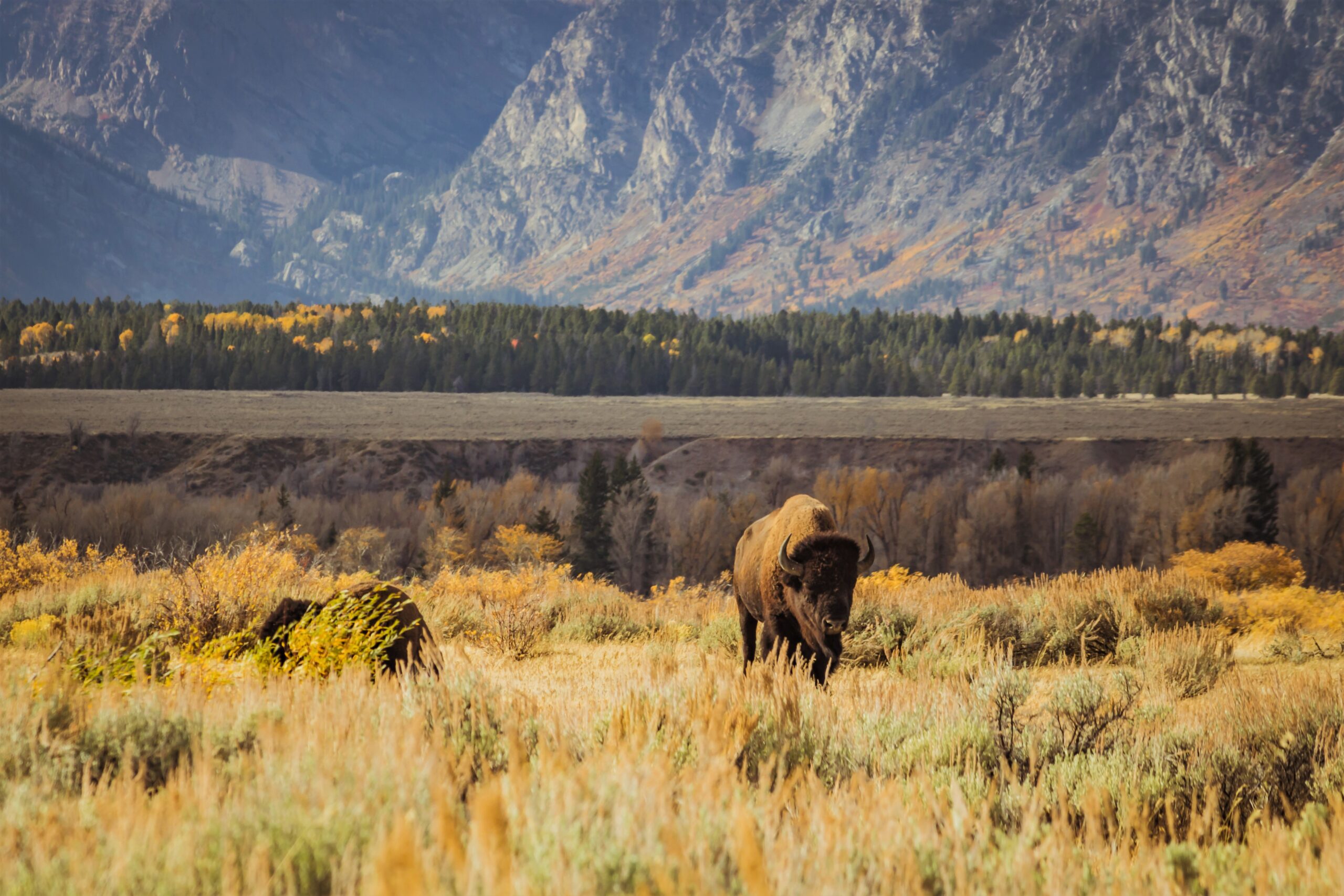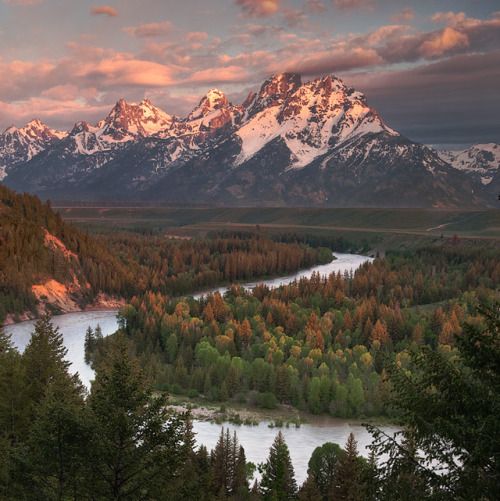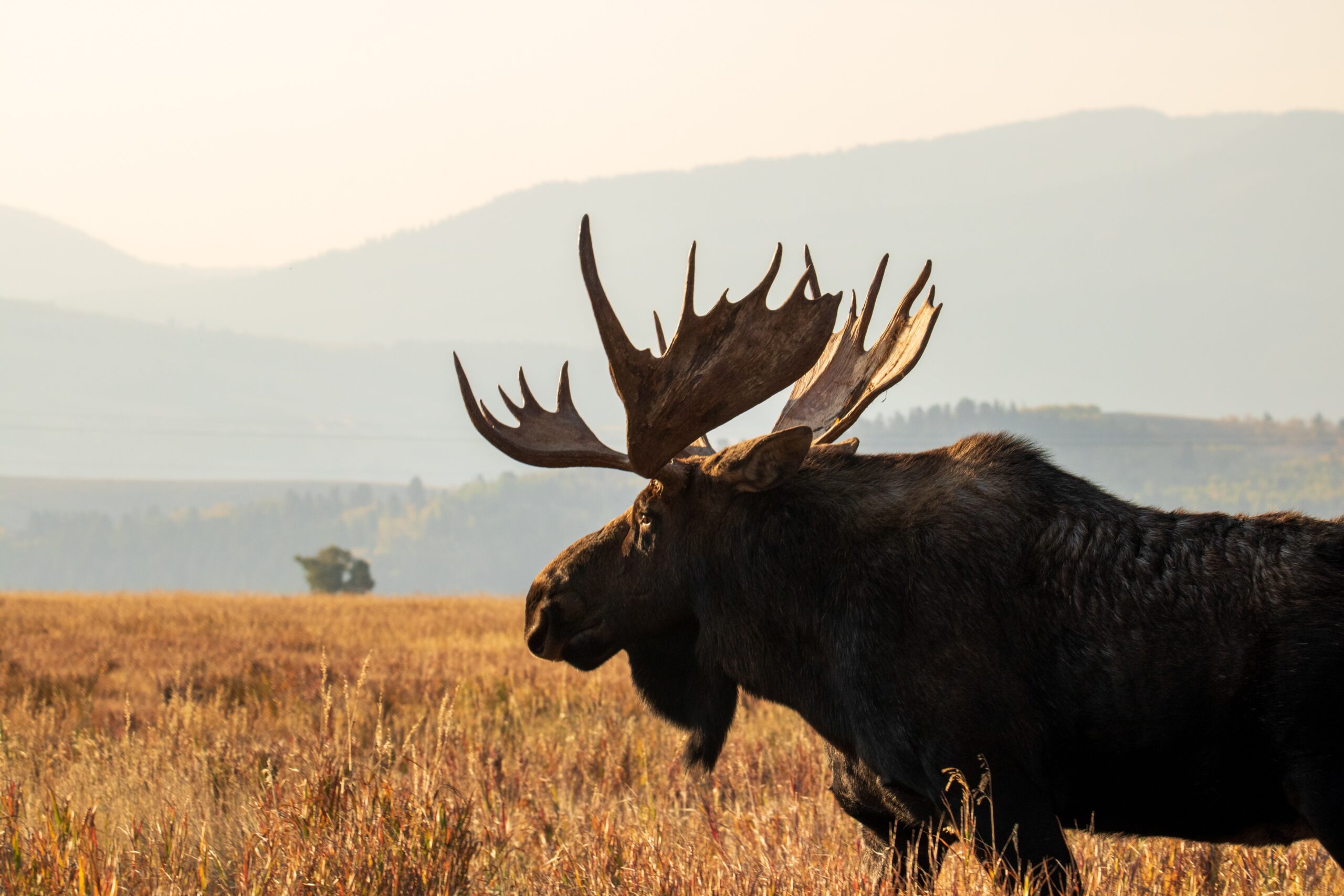Table of Contents
Overview of Grand Teton National Park
One of Wyoming’s most beautiful places to visit is Grand Teton National Park, which lies south of Yellowstone National Park. The park, which was created in 1929, guards the tallest peaks of the Teton Range. Grand Teton, the largest peak in the Teton Range, is the name of the national park. The photo opportunities are abundant, from the dazzling Jenny and Jackson lakes to the 13,770-foot Grand Teton, which reflects the mountains in its depths. But mountaineers and photographers aren’t the only visitors to the park. In the summer time, the region’s trails attract hikers of all levels and provide treasures like undiscovered waterfalls and spectacular Tetons views. The Snake River, meanwhile, draws kayakers, rafters, and people who just want to float. History enthusiasts who are interested in this section of the Western Frontier’s past in the 19th century are drawn to historic areas like Menors Ferry and Mormon Row.
History of Grand Teton
Jackson Hole and the Teton Range have long been inhabited by people. Since more than 11,000 years ago, people have been drawn to this region by its breathtaking beauty and plethora of species and vegetation. Following the retreat of Pleistocene Ice Age glaciers, Paleo-Indians who were nomadic originally inhabited the Jackson Hole valley. Stone tools, fire pits, and tipi rings are what they left behind. Indian tribes visited during the summers when there was an abundance of food to gather bulbs and berries, fish in the lakes and streams, and hunt animals. John Colter may have been the first European-American explorer to see Jackson Hole. He participated in the “Corps of Discovery” expedition conducted by Lewis and Clark, but he left the group in the fall of 1806 and journeyed through this area in the winter of 1807–1808. Sadly, Colter didn’t leave any documentation of his travels in writing.

The creation of Grand Teton National Park took several years. In order to preserve the Teton Range and many lakes at the base of the mountains, Congress established the first park in 1929. Franklin D. Roosevelt established further valley property as Jackson Hole National Monument in 1943. John D. Rockefeller Jr. donated the property he bought to the government in 1949 so that it might be turned into a national park. In order to create the current Grand Teton National Park, Congress finally united the old park, the national monument, and the Rockefeller properties in 1950. The John D. Rockefeller, Jr. Memorial Parkway, which connects Yellowstone and Grand Teton, was created by Congress in 1972 to recognize Rockefeller’s philanthropy and dedication to the National Park System.
Geography of Grand Teton
Northwestern Wyoming’s Grand Teton National Park is a stunning glacier mountain range in the United States. The National Elk Refuge is next to the park’s extreme southeast edge, and it is located just south of Yellowstone National Park (to which it is connected by the John D. Rockefeller, Jr., Memorial Parkway) and just north of Jackson. The morainic environment of the valley, which is strewn with glacial lakes of all sizes, takes over from the steep, rough mountains. The largest of them is Jackson Lake, created by a dam across the Snake River, and the most well-known of these is Jenny Lake, which is located at the base of the highest peaks.
Weather of Grand Teton
Summer (June-September): The summers are warm, dry, and largely clear at Grand Teton National Park. The pleasant weather is perfect for exploring Grand Teton’s upper peaks. The average annual temperature is between 6°F and 80°F; it is seldom below -13°F or over 87°F.
Falls (September-October): Although you will notice that as winter approaches, snowstorms will become more frequent and intense. Fall delivers cool nights and sunny beautiful days. Daytime highs in September are in the upper 60s; by October, they have dropped to the mid-50s; and by November, they have dropped even more (to the upper 30s). Nighttime lows in September, October, and November range from the 30s to the 20s.
Winter (November-April)
In between storms, the days are gorgeously sunny, while the nights are bitterly cold. Grand Teton winter traveling will require all-weather tires or four-wheel drive. In the winter months of December and January, daytime temperatures are often in the 20s. By February, they have warmed to the 30s, and by March, they have reached as high as 40. Until March, when it may barely reach 11°F, nights linger around zero.
Spring (April-May): Although spring brings warm days and cold nights, paths will still be blanketed with snow until the end of May. It frequently rains and even snows on occasion. 60s to 30s are the range of temperatures.
Fauna and Flora
The wildlife in these parks, including bears, bighorn sheep, bison, elk, bald eagles, river otters, and moose, is frequently the main attraction for tourists. Black bears, three species of wildcats, coyotes, wolverines, pine martens, over 60 smaller species of animals, and 322 species of birds are also found in the parks. Pronghorns, mountain goats, and two species of deer are also present. The environment today supports around 530 grey wolves, who were reintroduced in 1995, giving rise to a diverse range of fauna.
The Greater Yellowstone Ecosystem, one of the biggest protected wilderness regions in the continental United States, includes Grand Teton National Park. It is home to numerous unique and endangered species of plants and animals, which live in a range of linked yet interconnected ecosystems. There are more than 1,500 native plant species in the Greater Yellowstone environment. Examples of Flora include coniferous trees, Lodgepole Pine, Douglas Fir, and Subalpine Fir.



Places to Visit
Grand Teton: The enormous Grand Teton, the tallest of the numerous peaks in the park, towers dramatically over the rest of the rough range. It has long been a well-liked climbing location because of its extreme size, majesty, and magnificence.
Cascade Canyon Trail: Straight west of Jenny Lake lies the canyon. One of the most popular hiking routes in the park, the Cascade Canyon Trail runs the whole length of the canyon. After an easy 1.8-mile stroll down the Jenny Lake Trail, the canyon may be reached from the campsite at Jenny Lake.
Mormon Row Historic District: Mormon pioneers arrived in the region in the 1890s and built the rickety, out-of-the-way farms, barns, and homes that may be seen today. One of the most recognizable pictures of the park is formed by the 27 antique wooden structures, which now seem worn and aged and perfectly depict a pastoral landscape.
Jackson Lake: It is a Wyoming outdoor wonderland close to Jackson Hole that is ideal for boating and fishing. Visitors may enjoy fantastic scenic cruises around the lake or keep an eye out for animals along its undeveloped western coast, including elk, bison, and bears.
Signal Mountain Summit: Right off the highway, it is at the end of a 5-mile drive. There is a viewing spot with parking where you may enjoy a fantastic view of Jackson Hole, Jackson Lake, and the Teton Range.
Chapel of the Sacred Heart: On Catholic Bay of Jackson Lake, there is a chapel dedicated to the Sacred Heart. The Teton County Historic Preservation Board recognizes the lovely chapel as being more than 50 years old. It was constructed in 1937.
The Paintbrush Canyon: The Cascade Canyon Loop is a challenging walk. While many people opt to complete this trek over the course of two or even three days, many others attempt to complete it in a single lengthy day. In either case, hikers need to be equipped to handle a broad range of weather conditions, such as sun, wind, snow, and thunderstorms.
Snake River Overlook: Ansel Adams captured the classic image of the Snake River and its meandering bends with the Tetons in the distance in 1942, making the Snake River Overlook renowned. Not only did he capture the natural beauty of this place, but also did so using black and white film.
Some Other Key Points
How much is the entrance fee?
A seven-day park pass is available for $35 per vehicle, $30 per motorcycle or $20 per person, and an annual park pass will cost $70.
Where do I enter Yosemite National Park?
There are three authorized entrances into the park: the Moose entrance for those travelling from Jackson, the Moran entrance for those coming from Denver, or the slowest but most beautiful entrance, Granite Canyon.
Where should we stay?
Jackson Lake Lodge, Jenny Lake Lodge, Colter Bay Village, and Headwaters Lodge at Flagg Ranch
Thank You for Visiting Our Website “Your Fact Houses” (your.facthouses.com)
